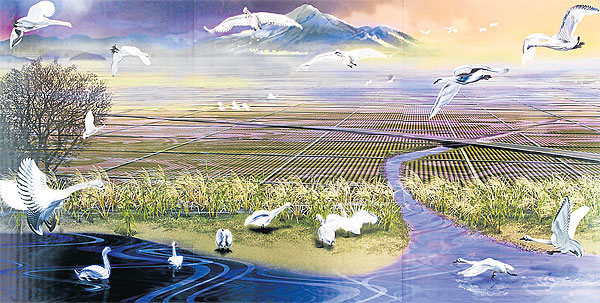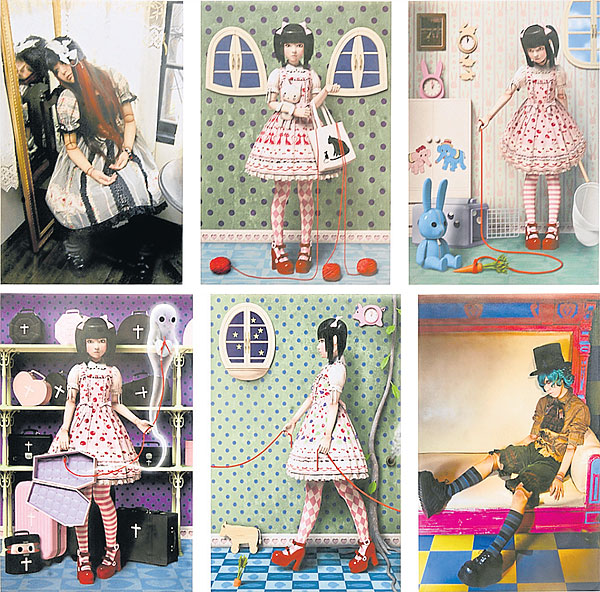
The Messenger Of Winter is an impression of Fukushima before the crisis at the nuclear plant.
Winners reveal fusion between PCs, logic and emotions
Digital art is no longer limited to artistic expressions. It has crept into our daily lives in the guise of entertainment, from movies to games.
Asia Digital Art Award: The First Symposium & Showcase was recently staged in Thailand. It was held to display works associated with digital media technology as well as present winning pieces from last year's Asia Digital Art Awards.
The awards have been held since 2001 with the goal of advancing art with digital content and promoting and discovering talented individuals.
One of the judges, Prof Etsuo Genda from Kyushu University, noted that the award is judged on the concept of fusion between logical thinking and rich artistic feeling based on media technology.

Zen Landscape , a 3D image comprising independent pieces of art, won the grand prize.
Another judge, Prof Sakai Shigekazu of Waseda University Graduate School, said that way back in the year 2000 it was thought information technology would be a key driver of the world economy in the 21st century. In Japan then, full IT utilisation had led to the creation of culture and art.
``The first 10 years [of the century] have already ended, and now we are at the beginning of the next chapter. With the widespread use of the internet and smartphones, I do believe that digital art does not only provide artistic expression, but it will be more applied in the economic sector,'' he said.
The award comprises four categories: still image, moving image, interactive art, and entertainment.
Zen-Keshik (Zen Landscape) by Jyari won the grand prize in the still image category, with judges hailing the complexity of the 3D work. A close look at the details reveals the artist created it by assembling many independent artworks, and this high-resolution piece represents ``Asianess''. The Messenger Of Winter is an image of Fukushima before the nuclear crisis. The artist aims to present the beauty of the city before the disaster.
Hiroshima Archive, a digital documentation of the consequences of the Hiroshima atomic bomb, won the interactive prize. It uses Google Earth's virtual globe to display valuable information gathered from sources such as the Hiroshima Peace Memorial Museum, the Hiroshima Jogakuin Gaines Association, and the Hachioji Hibakusha (A-bomb Survivors) Association. The archive promotes a multi-faceted and comprehensive understanding of the reality of atomic bombing. The project collected the accounts of survivors in cooperation with local high school students and nationwide volunteers, which were made available through a ``community of records''.

Cute robotic dolls.
The 3D space provides a panoramic view of Hiroshima and access to the survivors' accounts, photos, maps, and other material, together with aerial photos, 3D data, and building models.
How Do You Get In Outside won the moving image grand prize. The project attempts to apply mathematics to calculate the movement of human beings.
These are just some of hundreds of diverse, high quality works of art from Japanese and international artists, and young Thai artists, exhibited at the event.
National Electronics and Computer Technology Centre deputy director Dr Kwan Sitathani said Japan is a model country for digital art that uses computer-created videos and still images. Demand for digital art is increasing both locally and internationally, especially in the entertainment industry, digital content and animation. There are about 25 universities providing digital art curricula at the bachelor's and master's degree levels, and many have international courses. If there is serious support, Thailand can become a hub in this field.



